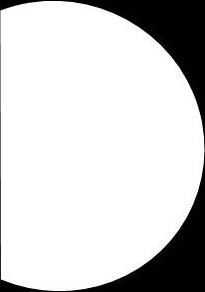
Design Technologyandat
Our Lady of the Rosary
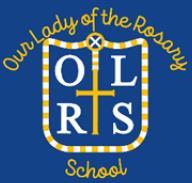



For the LORD gives wisdom; from his mouth come knowledge and understanding.
Proverbs 2:6

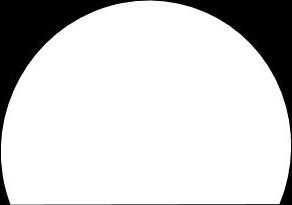



Our vision at Our Lady of the Rosary Catholic Primary School is to provide the highest quality of education within a Catholic ethos. We will provide an inclusive education for all where creativity, diversity and personality are allowed to blossom and thrive and where independence, motivation and perseverance become life-long skills. Through the love of God, we will nurture individual uniqueness, treating others with the utmost respect at all times, working hard using the talents God has given us for the good of other people and to achieve our best. At Our Lady of the Rosary, we will nurture a strong learning partnership between home, school, parish and our wider community.
We aim to ensure pupils enjoy learning and feel prepared for life after school. We also intend to offer our pupils new and exciting experiences through extra-curricular activities that are designed to build resilience, confidence and self-esteem. Our curriculum will be delivered in accordance with the Equality Act 2010, through a variety of methods, including those outlined below.




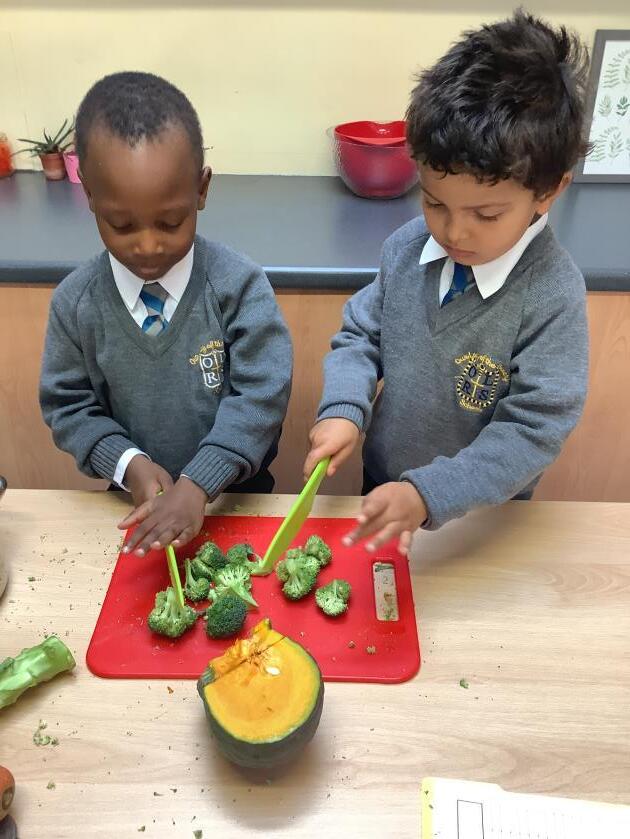
At Our Lady of the Rosary School, we believe that Design and Technology is of key importance to providing a creative, relevant and skills based curriculum for all pupils in an ever-advancing world of technological development. A skills-based curriculum is essential to effectively equip pupils with the technical knowledge and evaluative approach necessary to solve real life problems. “D&T brings learning to life. Children like making decisions for themselves and doing practical work. By combining their design and making skills with knowledge and understanding they learn to create quality products.” (The Design and Technology Association)
Our aim is to ensure pupils develop a lifelong, healthy and enthusiastic attitude towards Design and Technology equipped with the technical skills necessary to accurately document and convey their intentions.
We have a strong focus on technical knowledge, knowing how fundamental it is to our ability to learn and communicate ideas, views and feelings. We encourage children to use their creativity and imagination to design and make products that solve real and relevant problems within a variety of contexts, considering their own and others’ needs, wants and values.
We follow a bespoke, systematic and progressive Design and Technology programme which details four key domains within D&T.
• -Cooking and Nutrition
• -Textiles
• -Coding and Control
• -Mechanisms and Structures
At Our Lady of the Rosary, it is our duty to ensure that all pupils:
•develop the creative, technical and practical expertise needed to perform everyday tasks confidently and to participate successfully in an increasingly technological world
•build and apply a repertoire of knowledge, understanding and skills in order to design and make high-quality prototypes and products for a wide range of users •critique, evaluate and test their ideas and products and the work of others •understand and apply the principles of nutrition and learn how to cook.
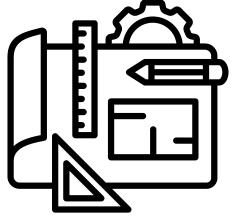



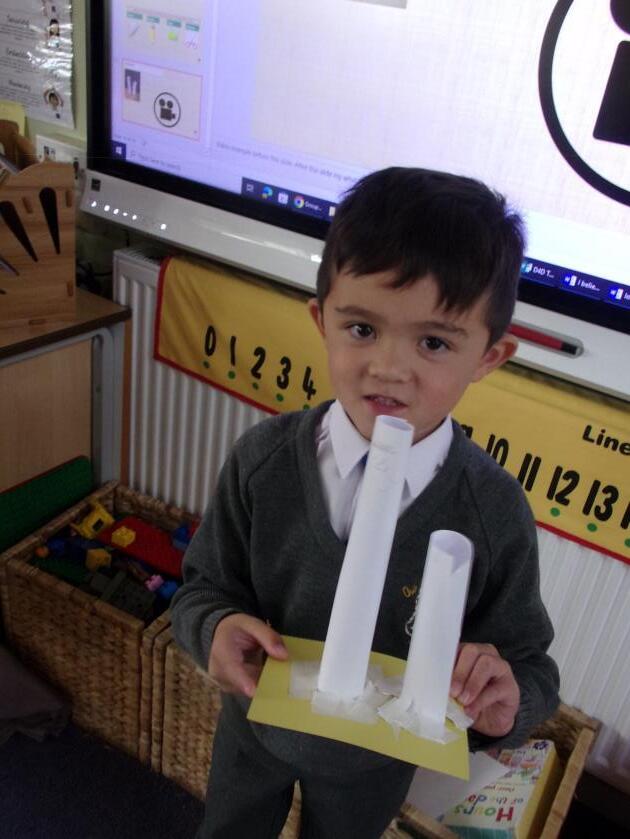
Year 1
Across the year EYFS will be meeting their knowledge through:
• Junk modelling
• Construction
• Fine motor activities
• crafting
Structures: Egg box dragon
Experiment using junk box modelling to create a structure.
Year 2
Year 3
Textiles: Finger puppets
Experiment a variety of ways to join fabric to create a puppet
Structures: Stone Age Houses
Evaluate a range of materials and shapes to best suit a house, with the time period in mind
Year 4
Year 5
Year 6
Textiles: Pillow
Identify the materials that work best for the product and plan a design based on a specific criterion
Coding and Control: Micro bit –
Dice game
Plan and make a board game which involves the use of a programmed dice through the Micro Bit
Structures: Frame structures
Understand how to strengthen, stiffen and reinforce 3D frameworks.
Mechanisms: Swing
Join frames and axels together to create their own model
Mechanisms: Pop up cards
Children to use either leavers or sliders to create their own pop-up cards.
Cooking and Nutrition: Quiche
Understand where food comes from and how to safely prepare and make food
Cooking and Nutrition: Greek Food
Understand seasonality and make a Greek salad using seasonal ingredients
Textiles: Boat Sails
Children to use the art of weaving a variety of fabrics to create a sail for their flood lands boat
Mechanisms: Fairground ride
Research famous designers and inventors to inform my designs and plan accordingly coinciding their designs.
Cooking and Nutrition: Fruit Salad
Identify fruits to design and make a fruit salad
Cooking and SandwichesNutrition:
Understand that food comes from a variety of places and plan a selection of food to include within a sandwich
Textiles: Coin Pouch
Experiment a variety of ways in which we can join fabric together and plan a design for the cover
Electrical: Systems for a lighthouse
Make a simple electric circuit to make a functioning lighthouse
Cooking and Nutrition: Scone/Biscuit/BreadSavoury roll
Select an appropriate variety of ingredients and use a wide range of techniques to combine them
Textiles: Tie-dye Recycled Bag
Draw a design to measure, cut and assemble fabric to create a sustainable bag
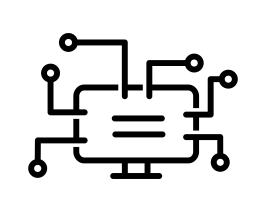

Design

I can begin to work within a range of contexts, such as imaginary, story-based.
I can verbalise whether my products are for myself or other users.
I can describe what my products are for.
I can begin to describe how my product will work.
I can begin to discuss how my product will be suitable for its intended user.
I can create a simple design for my product.
Make I can plan by suggesting what to do next.
I can select from a range of tools and equipment, and begin to explain my choices.
I can begin to select from a range of materials and components according to my products characteristics.
I can follow procedures for safety and hygiene.
I am beginning to use a range of materials and components, including construction materials and kits, textiles, and mechanical components.
I am beginning to measure, mark out, cut and shape materials and components.
I am beginning to assemble, join and combine materials and components.
I am beginning to use finishing techniques, including those from art and design.

Evaluate I am beginning to discuss existing products and ask questions about:
- Who they are for
- What they are for - How they work - How they are used - Where they are used
- What materials they are made from I can discuss my thoughts and feelings towards existing products.
I can talk about my design ideas and what I am making.
I am beginning to make simple judgements about my products and ideas against a design criterion.
I am beginning to know about the simple working characteristics of materials and components.
I am beginning to know about the movement of simple mechanisms such as levers, sliders, wheels and axles.
I know how freestanding structures can be made stronger, stiffer and more stable.
I am beginning to use the correct technical vocabulary for the projects I am undertaking.
I can work within a range of contexts, such as imaginary, story-based.
I can describe whether my products are for myself or other users.
I can describe what my products are for.
I can describe how my product will work.
I can describe how my product will be suitable for its intended user.
I can create a simple design for my product.
I can plan by suggesting what to do next and begin to explain why I think this is a good idea.
I can select from a range of tools and equipment, and explain my choices.
I can select from a range of materials and components according to my products characteristics.
I can follow procedures for safety and hygiene.
I can use a range of materials and components, including construction materials and kits, textiles, and mechanical components.
I can measure, mark out, cut and shape materials and components.
I can assemble, join and combine materials and components.
I can use finishing techniques, including those from art and design.
I can discuss existing products and ask questions about:
Who they are for
- What they are for
How they work
How they are used
- Where they are used
- What materials they are made from I can discuss my thoughts and feelings towards existing products.
I can talk about my design ideas and what I am making.
I make simple judgements about my products and ideas against my design criterion.
I can begin to make suggestions about how my product could be improved.
I know about the simple working characteristics of materials and components.
I know about the movement of simple mechanisms such as levers, sliders, wheels and axles.
I can use the correct technical vocabulary for the projects I am undertaking.
I can carry out research, using surveys, interviews, questionnaires and web-based resources.
I can identify the needs, wants, preferences and values of particular individuals and groups
I can develop a simple design specification to guide my thinking throughout the process.
I can work confidently within a range of contexts, such as the home, school, leisure, culture, enterprise, industry and the wider environment.
I can describe the purpose of my product.
I can indicate the design features of my products that will appeal to intended users.
I can explain how particular parts of my product will work.
I can produce appropriate lists of tools, equipment and materials that I need.
I can formulate step-by-step plans as a guide to making.
I can accurately apply a range of finishing techniques, including those from art and design.
I can use techniques that involve a number of steps.
I can demonstrate resourcefulness when tackling a practical problem.
I can select materials and components suitable for the task.
I can explain my choice of materials and components according to functional properties and aesthetic qualities.
I can follow procedures for safety and hygiene.
I can use a wider range of materials and components than KS1, including construction materials and kits, textiles, mechanical components and electrical components.
I can discuss existing products and ask questions about:
How much the product would cost to make
- How innovative the product is
How sustainable the materials used are
- What impact the product has beyond their intended purpose
I can consider the views of others, including intended users, to improve my work.
I can explain how well products meet the users wants and needs.
I can discuss inventors, designers, engineers, and manufacturers who have developed ground-breaking products.
I can use the correct technical vocabulary for the projects I am undertaking.
I know how to use learning from mathematics to help design and make products that work.
I know how mechanical systems such as cams or pulleys or gears create movement.
I know that materials can be combined and mixed to create more useful characteristics.
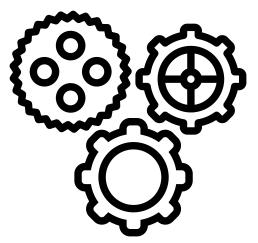

Design

I can verbalise whether my products are for myself or other users.
I can describe what my products are for.
I can begin to describe how my product will work.
I can create a simple design for my product.
Make I can plan by suggesting what to do next.
I can select from a range of tools and equipment, and begin to explain my choices.
I can begin to select from a range of materials and components according to my products characteristics.
I can follow procedures for safety and hygiene.
I am beginning to use a range of materials and components, including construction materials and kits, textiles, and mechanical components.
I am beginning to measure, mark out, cut and shape materials and components.
I am beginning to assemble, join and combine materials and components.
I am beginning to use finishing techniques, including those from art and design.

Evaluate I am beginning to discuss existing products and ask questions about:
- Who they are for
- What they are for
- How they work
- How they are used
- Where they are used
- What materials they are made from
I can discuss my thoughts and feelings towards existing products.
I can talk about my design ideas and what I am making.
I am beginning to make simple judgements about my products and ideas against a design criterion.
Technical Knowledge
I am beginning to know about the simple working characteristics of materials and components.
I am beginning to use the correct technical vocabulary for the projects I am undertaking.
I can begin to gather information about the needs and wants of particular individuals and groups to form my intended user.
I can begin to develop my own design criteria and use this to inform my idea.
I can begin to work confidently within a range of contexts, such as the home, school, leisure.
I can describe the purpose of my product.
I can begin to indicate the design features of my products that will appeal to intended users.
I can begin to explain how particular parts of my product will work.
I can order the main stages of making.
I can measure, mark out, cut and shape materials and components with some accuracy.
I can assemble, join and combine materials and components with some accuracy.
I can select tools and equipment suitable for the task
I can begin to explain my choice of tools and equipment in relation to the skills and techniques I will be using.
I can follow procedures for safety and hygiene.
I can begin to use a wider range of materials and components than KS1, including construction materials and kits, textiles, mechanical components and electrical components.
I can discuss existing products and ask questions about:
- Who designed and made the product
- Where it was designed and made
- When they were designed and made
I can refer to my design criteria as I design and make my product.
I can identify the strengths and areas for development in my ideas and products.
I can explain how well products have been designed.
I can explain how well products have been made.
I know how mechanical systems such as levers and linkages or pneumatic systems create movement.
I know how to make strong, stiff shell structures.
I know that materials can be combined and mixed to create more useful characteristics.
I am beginning to know how to use learning from mathematics to help design and make products that work.
I am beginning to use the correct technical vocabulary for the projects I am undertaking.
I can carry out research, using surveys, interviews, questionnaires and web-based resources.
I can identify the needs, wants, preferences and values of particular individuals and groups I can develop a simple design specification to guide my thinking throughout the process. I can work confidently within a range of contexts, such as the industry and the wider environment.
I can describe the purpose of my product. I can indicate the design features of my products that will appeal to intended users. I can explain how particular parts of my product will work.
I can produce appropriate lists of tools, equipment and materials that I need.
I can formulate step-by-step plans as a guide to making.
I can accurately apply a range of finishing techniques, including those from art and design.
I can use techniques that involve a number of steps.
I can demonstrate resourcefulness when tackling a practical problem.
I can select materials and components suitable for the task.
I can explain my choice of materials and components according to functional properties and aesthetic qualities.
I can follow procedures for safety and hygiene.
I can use a wider range of materials and components than KS1, including construction materials and kits, textiles, mechanical components and electrical components.
I can discuss existing products and ask questions about:
- How much the product would cost to make
How innovative the product is
- How sustainable the materials used are
- What impact the product has beyond their intended purpose
I can consider the views of others, including intended users, to improve my work.
I can explain how well products meet the users wants and needs.
I can discuss inventors, designers, engineers, and manufacturers who have developed ground- breaking products.
I can use the correct technical vocabulary for the projects I am undertaking.
I know how to use learning from mathematics to help design and make products that work.
I know how to reinforce and strengthen a 3D framework.
I know that materials can be combined and mixed to create more useful characteristics.

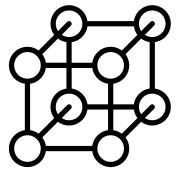
Design

I can talk about what I eat at home and begin to discuss what healthy foods are.
I can describe whether my products are for myself or other users.
I can say where some food comes from and give examples of food that is grown.
I can describe what my products are for.
I can create a simple design for my product.
I can describe whether my products are for myself or other users.
I can describe what my products are for.
I can describe how my product will be suitable for its intended user.
I can create a simple design for my product.
Make I can plan by suggesting what to do next.
I can select from a range of tools and equipment, and begin to explain my choices.
I can follow procedures for safety and hygiene.
I am beginning to use a range of materials and components, including food ingredients.
Evaluate I am beginning to discuss existing products and ask questions about them.

I can discuss my thoughts and feelings towards existing products.
I can talk about my design ideas and what I am making.
I am beginning to make simple judgements about my products and ideas against a design criterion.
I am beginning to use the correct technical vocabulary for the projects I am undertaking.
I am beginning to know that food ingredients should be combined according to their sensory characteristics.
I know that all food comes from plants or animals.
I know how to name and sort foods into the five groups in the Eatwell Guide.
I know that everyone should eat at least five portions of fruit and vegetables every day.
I am beginning to know how to prepare simple dishes safely and hygienically, without using a heat source.
I know how to use techniques such as cutting.
I can plan by suggesting what to do next and begin to explain why I think this is a good idea.
I can select from a range of tools and equipment, and explain my choices.
I can follow procedures for safety and hygiene.
I can use a range of materials and components, including food ingredients.
I can discuss existing products and ask questions about them.
I can discuss my thoughts and feelings towards existing products.
I can talk about my design ideas and what I am making.
I make simple judgements about my products and ideas against my design criterion.
I can begin to make suggestions about how my product could be improved.
I can use the correct technical vocabulary for the projects I am undertaking.
I know that food ingredients should be combined according to their sensory characteristics.
I know that food has to be farmed, grown elsewhere (e.g. home) or caught.
I know how to name and sort foods into the five groups in the Eatwell Guide.
I know that everyone should eat at least five portions of fruit and vegetables every day. I am beginning to know how to prepare simple dishes safely and hygienically, without using a heat source.
I know how to use techniques such as cutting, peeling and grating.
I can begin to gather information about the needs and wants of particular individuals and groups to form my intended user.
I can begin to develop my own design criteria and use this to inform my idea.
I can begin to work confidently within a range of contexts, such as the home, school, leisure.
I can describe the purpose of my product.
I can gather information about the needs and wants of particular individuals and groups to form my intended user.
I can develop my own design criteria and use this to inform my idea.
I can begin to work confidently within a range of contexts, such as the home, school, leisure.
I can describe the purpose of my product.
I can begin to indicate the design features of my products that will appeal to intended users.
I can order the main stages of making. I can select tools and equipment suitable for the task
I can order the main stages of making.
I can select tools and equipment suitable for the task.
I can begin to explain my choice of tools and equipment in relation to the skills and techniques I will be using.
I can explain my choice of tools and equipment in relation to the skills and techniques I will be using.
I can begin to carry out research, using surveys, interviews, questionnaires and web-based resources.
I can begin to identify the needs, wants, preferences and values of particular individuals and groups.
I can develop a simple design specification to guide my thinking throughout the process.
I can work confidently within a range of contexts, such as the industry and the wider environment.
I can describe the purpose of my product.
I can indicate the design features of my products that will appeal to intended users.
I can produce appropriate lists of equipment and materials that I need.
I can formulate step-by-step plans as a guide to making.
I can begin to select materials and components suitable for the task.
I can follow procedures for safety and hygiene.
I can begin to use a wider range of materials and components than KS1, including food ingredients.
I can discuss existing products and ask questions about them.
I can refer to my design criteria as I design and make my product.
I can identify the strengths and areas for development in my ideas and products.
I can explain how well products have been made.
I can follow procedures for safety and hygiene.
I can begin to use a wider range of materials and components than KS1, including food ingredients.
I can discuss existing products and ask questions about them.
I can use my design criteria to evaluate my completed product.
I can identify the strengths and areas for development in my ideas and products.
I can explain why certain materials have been chosen.
I can explain what methods of construction have been used.
I am beginning to use the correct technical vocabulary for the projects I am undertaking.
I am beginning to know how to use learning from mathematics to help design and make products that work.
I am beginning to know that food ingredients can be fresh, pre-cooked and processed.
I know that a healthy diet is made up from a variety and balance of different food and drink, as depicted in the Eatwell Guide.
I know that to be active and healthy, food and drink are needed to provide energy for the body.
I know that food is grown (such as tomatoes, wheat and potatoes), reared (such as pigs, chickens and cattle) and caught (such as fish) in the UK, Europe and the wider world.
I know how to use a range of techniques such as chopping, slicing, grating, mixing and baking.
I know that food ingredients can be fresh, pre-cooked and processed.
I am beginning to use the correct technical vocabulary for the projects I am undertaking.
I am beginning to know how to use learning from mathematics to help design and make products that work.
I know that a healthy diet is made up from a variety and balance of different food and drink, as depicted in the Eatwell Guide.
I know that to be active and healthy, food and drink are needed to provide energy for the body.
I know how to use a range of techniques such as peeling, chopping, slicing, grating and mixing.
I am beginning to know that seasons may affect the food available.
I know that that recipes can be adapted to change the appearance, taste, texture and aroma.
I am beginning to explain my choice of materials and components according to functional properties and aesthetic qualities.
I can follow procedures for safety and hygiene.
I can use a wider range of materials and components than KS1, including food ingredients.
I can discuss existing products and ask questions about:
- How much the product would cost to make
- How innovative the product is
- How sustainable the materials used are
I can evaluate my ideas and products against the original design specification.
I am beginning to consider the views of others, including intended users, to improve my work.
I can use the correct technical vocabulary for the projects I am undertaking.
I know how to use learning from mathematics to help design and make products that work.
I know that a recipe can be adapted by adding or substituting one or more ingredients.
I know how to prepare and cook a variety of predominantly savoury dishes safely and hygienically including, where appropriate, the use of a heat source.
I know that a healthy diet is made up from a variety and balance of different food and drink, as depicted in the Eatwell Guide.
I know that to be active and healthy, food and drink are needed to provide energy for the body.
I know how food is processed into ingredients that can be eaten or used in cooking.
I know that different food and drink contain different substances –nutrients, water and fibre – that are needed for health.

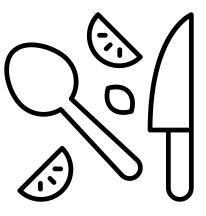

Make
I can work confidently within a range of contexts, such as imaginary, story-based.
I can describe whether my products are for myself or other users.
I can describe what my products are for.
I can describe how my product will work.
I can describe how my product will be suitable for its intended user.
I can create a simple design for my product.
I can begin to gather information about the needs and wants of particular individuals and groups to form my intended user.
I can begin to develop my own design criteria and use this to inform my idea.
I can begin to work confidently within a range of contexts, such as the home, school & leisure.
I can describe the purpose of my product.
I can begin to indicate the design features of my products that will appeal to intended users.
I can begin to explain how particular parts of my product will work.
I can plan by suggesting what to do next and begin to explain why I think this is a good idea.
I can select from a range of tools and equipment, and explain my choices.
I can select from a range of materials and components according to my products characteristics.
I can follow procedures for safety and hygiene.
I can use a range of materials and components, including construction materials and kits, textiles, and mechanical components.
I can measure, mark out, cut and shape materials and components.
I can assemble, join and combine materials and components.
I can use finishing techniques, including those from art and design.

I can order the main stages of making.
I can measure, mark out, cut and shape materials and components with some accuracy.
I can assemble, join and combine materials and components with some accuracy.
I can select tools and equipment suitable for the task
I can begin to explain my choice of tools and equipment in relation to the skills and techniques I will be using.
I can follow procedures for safety and hygiene.
I can begin to use a wider range of materials and components than KS1, including construction materials and kits, textiles, mechanical components and electrical components.
can gather information about the needs and wants of particular individuals and groups to form my intended user.
can develop my own design criteria and use this to inform my idea.
can begin to work confidently within a range of contexts, such as the home, school, leisure & culture.
can describe the purpose of my product.
can begin to indicate the design features of my products that will appeal to intended users.
can begin to explain how particular parts of my product will work.
can order the main stages of making. can measure, mark out, cut and shape materials and components with some accuracy.
can assemble, join and combine materials and components with some accuracy. can apply a range of finishing techniques, including those from art and design, with some accuracy can select tools and equipment suitable for the task.
can explain my choice of tools and equipment in relation to the skills and techniques will be using. can follow procedures for safety and hygiene.
can begin to use a wider range of materials and components than KS1, including construction materials and kits, textiles, mechanical components and electrical components.
can begin to carry out research, using surveys, interviews, questionnaires and web- based resources.
can begin to identify the needs, wants, preferences and values of particular individuals and groups can develop a simple design specification to guide my thinking throughout the process.
can work confidently within a range of contexts, such as the industry and the wider environment.
can describe the purpose of my product.
can indicate the design features of my products that will appeal to intended users.
can produce appropriate lists of tools, equipment and materials that I need.
can formulate step-by-step plans as a guide to making.
can accurately measure, mark out, cut and shape materials and components.
can accurately assemble, join and combine materials and components.
am beginning to accurately apply a range of finishing techniques, including those from art and design.
can begin to select materials and components suitable for the task.
am beginning to explain my choice of materials and components according to functional properties and aesthetic qualities.
can follow procedures for safety and hygiene.
can use a wider range of materials and components than KS1, including construction materials and kits, textiles, mechanical components and electrical components.
I can carry out research, using surveys, interviews, questionnaires and web-based resources.
I can identify the needs, wants, preferences and values of particular individuals and groups I can develop a simple design specification to guide my thinking throughout the process. I can work confidently within a range of contexts, such as the home, school, leisure, culture, enterprise, industry and the wider environment.
I can describe the purpose of my product.
I can indicate the design features of my products that will appeal to intended users.
I can produce appropriate lists of tools, equipment and materials that need.
I can formulate step-by-step plans as a guide to making.
I can accurately apply a range of finishing techniques, including those from art and design.
I can use techniques that involve a number of steps.
I can demonstrate resourcefulness when tackling a practical problem.
I can select materials and components suitable for the task.
I can explain my choice of materials and components according to functional properties and aesthetic qualities.
I can follow procedures for safety and hygiene.
I can use a wider range of materials and components than KS1, including construction materials and kits, textiles, mechanical components and electrical components.
I can discuss existing products and ask questions about: - Who they are for - What they are for
- How they work - How they are used - Where they are used
- What materials they are made from
I can discuss my thoughts and feelings towards existing products.
I can talk about my design ideas and what I am making.
I make simple judgements about my products and ideas against my design criterion.
I can begin to make suggestions about how my product could be improved.
I can use the correct technical vocabulary for the projects am undertaking.
I know that a 3-D textiles product can be assembled from two identical fabric shapes.
I can discuss existing products and ask questions about:
- Who designed and made the product - Where it was designed and made
- When they were designed and made
I can refer to my design criteria as I design and make my product.
I can identify the strengths and areas for development in my ideas and products.
I can explain how well products have been designed.
I can explain how well products have been made.
can discuss existing products and ask questions about:
Who designed and made the product
Where it was designed and made
- When they were designed and made
Whether the product is sustainable and recyclable
can use my design criteria to evaluate my completed product.
can identify the strengths and areas for development in my ideas and products.
can explain why certain materials have been chosen.
can explain what methods of construction have been used.
I am beginning to use the correct technical vocabulary for the projects am undertaking.
I am beginning to know how to use learning from mathematics to help design and make products that work.
I am beginning to know that a single fabric shape can be used to make a 3D textiles product.
am beginning to use the correct technical vocabulary for the projects I am undertaking. am beginning to know how to use learning from mathematics to help design and make products that work.
know that a single fabric shape can be used to make a 3D textiles product.
am beginning to know that materials have both functional properties and aesthetic qualities.
can discuss existing products and ask questions about:
How much the product would cost to make
- How innovative the product is
- How sustainable the materials used are
can evaluate my ideas and products against the original design specification.
can explain how well a product works.
can explain how well a product achieves its intended purpose.
am beginning to consider the views of others, including intended users, to improve my work.
can use the correct technical vocabulary for the projects I am undertaking.
know how to use learning from mathematics to help design and make products that work.
am beginning to know that a 3D textiles product can be made from a combination of fabric shapes.
know that materials have both functional properties and aesthetic qualities. know that materials can be combined and mixed to create more useful characteristics.
I can discuss existing products and ask questions about:
How much the product would cost to make
- How innovative the product is - How sustainable the materials used are
- What impact the product has beyond their intended purpose
I can consider the views of others, including intended users, to improve my work.
I can explain how well products meet the users wants and needs.
I can discuss inventors, designers, engineers, and manufacturers who have developed ground-breaking products.
I can use the correct technical vocabulary for the projects am undertaking.
I know how to use learning from mathematics to help design and make products that work.
I know that a 3D textiles product can be made from a combination of fabric shapes.
I know that materials have both functional properties and aesthetic qualities.
I know how to use learning from science to help design and make products that work.




I can begin to gather information about the needs and wants of particular individuals and groups to form my intended user.
I can begin to develop my own design criteria and use this to inform my idea.
I can begin to work confidently within a range of contexts, such as the home, school, leisure & culture.
I can describe the purpose of my product.
I can begin to indicate the design features of my products that will appeal to intended users.
I can begin to explain how particular parts of my product will work.
I can order the main stages of making.
I can measure, mark out, cut and shape materials and components with some accuracy.
I can assemble, join and combine materials and components with some accuracy.
I can apply a range of finishing techniques, including those from art and design, with some accuracy
I can select tools and equipment suitable for the task.
I can explain my choice of tools and equipment in relation to the skills and techniques I will be using.
I can follow procedures for safety and hygiene.
I can begin to use a wider range of materials and components than KS1, including construction materials and kits, textiles, mechanical components and electrical components.
I can discuss existing products and ask questions about:
- Who designed and made the product
- Where it was designed and made
- When they were designed and made
- Whether the product is sustainable and recyclable
I can use my design criteria to evaluate my completed product.
I can identify the strengths and areas for development in my ideas and products.
I can explain why certain materials have been chosen.
I can explain what methods of construction have been used.
I am beginning to use the correct technical vocabulary for the projects I am undertaking.
I am beginning to know how to use learning from mathematics to help design and make products that work.
I know how simple electrical circuits and components can be used to create functional products.
I know how to program a computer to control my products.
I am beginning to how to use learning from science to help design and make products that work.
I am beginning to know that mechanical and electrical systems have an input, process and output.
I can carry out research, using surveys, interviews, questionnaires and web-based resources.
I can identify the needs, wants, preferences and values of particular individuals and groups
I can develop a simple design specification to guide my thinking throughout the process.
I can work confidently within a range of contexts, such as the home, school, leisure, culture, enterprise, industry and the wider environment.
I can describe the purpose of my product.
I can indicate the design features of my products that will appeal to intended users.
I can produce appropriate lists of tools, equipment and materials that I need.
I can formulate step-by-step plans as a guide to making.
I can accurately measure, mark out, cut and shape materials and components.
I can accurately assemble, join and combine materials and components.
I am beginning to accurately apply a range of finishing techniques, including those from art and design.
I can begin to select materials and components suitable for the task.
I am beginning to explain my choice of materials and components according to functional properties and aesthetic qualities.
I can follow procedures for safety and hygiene.
I can use a wider range of materials and components than KS1, including construction materials and kits, textiles, mechanical components and electrical components.
I can discuss existing products and ask questions about:
- How much the product would cost to make
- How innovative the product is
- How sustainable the materials used are
I can evaluate my ideas and products against the original design specification.
I can explain how well a product works.
I can explain how well a product achieves its intended purpose.
I am beginning to consider the views of others, including intended users, to improve my work.
I know how more complex electrical circuits and components can be used to create functional products.
I know how to program a computer to monitor changes in the environment and control my products.
I know that mechanical and electrical systems have an input, process and output.
I can use the correct technical vocabulary for the projects I am undertaking.
I know how to use learning from mathematics to help design and make products that work.





A Design and Technology lesson should include the correct use of technical vocabulary, both within staff and child use.
A lesson should build on from the prior knowledge of the topic, particularly in skills and vocabulary.
Design and Technology lessons should discuss the product at hand and analyse current products to help format the new product created within the topic.
Lessons should contain a multitude of discussions around product purposes and their suitability to perform these desired outcomes. Within a lesson, teachers should be able to demonstrate their thought process within each stage of the design, make and evaluate process. This will enable the children to learn the correct vocabulary to use throughout the process and implement this into their own work.
Children should be able to reflect upon their decision making and problem solve continuously as product progresses through the process.




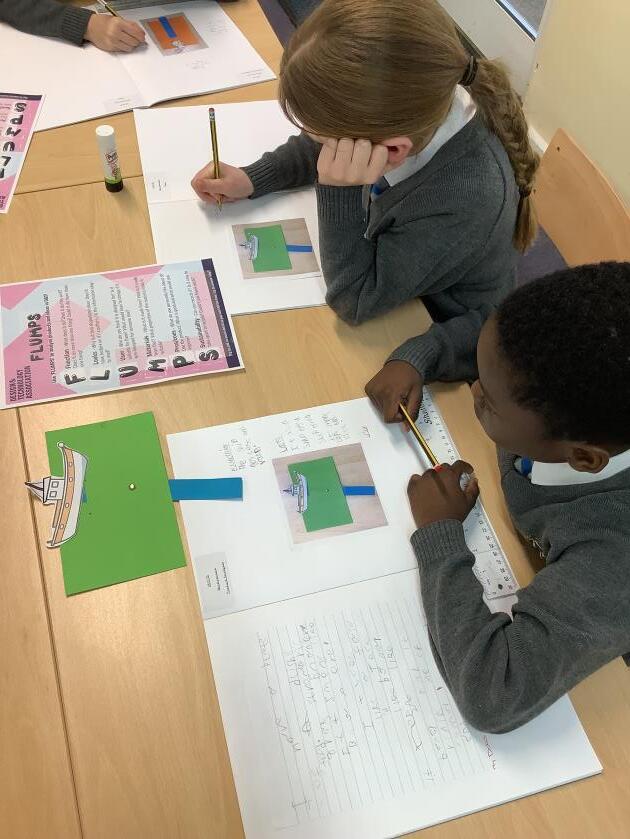
Summative assessments take place to measure pupil progress. The results of the assessments will be used to inform future planning and target setting.
- Children in Nursery and Reception are continually assessed against the goals in the Early Years Framework and progressed recorded termly. Where appropriate, children may continue to work within this framework and be assessed against this as they enter KS1.



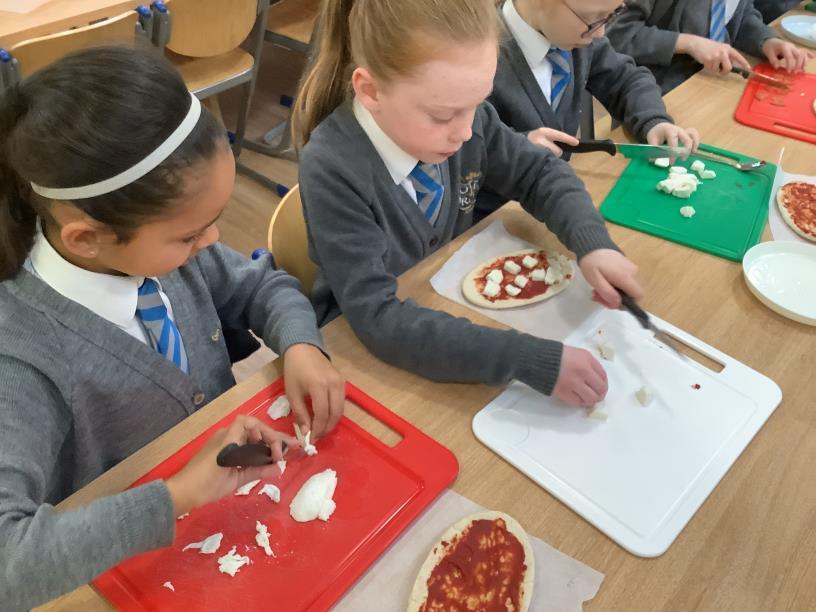

In Design and Technology we have provided children with ‘The Dyson Project’ which provided the children an insight into design process, developing their analytical skills and helping them to understand the thinking behind the products they use every day.
We have also begun a cooking club for children in years 4 and 5 after school to teach them the skills of cooking and embedding their classroom learning further.



“We have made board games in year 5. I enjoyed it as it was a creative way to expand my knowledge of games and how different ones function.”
– Year 5 child


“In Year 4 we made lighthouses with working lights. We had to assemble different parts for the lights to work and then we had to do some coding. I liked this because the end result was nice and it was fun making the lighthouse and putting everything together.”
“My favourite lesson was when we made the rainbow salad because it was made by every one and we got to eat it”
– Year 3 child
– Year 6 child





In Design and Technology we have been successful in re-creating a more sequential and coherent curriculum. We have design a curriculum which engages the interests of the children and connects their learning to other areas of the curriculum. We have also produced better outcomes from lessons as teachers are becoming more equipped in the subject and what it means to teach a ‘D&T’ lesson.
Across the last two years, we have begun to implement more enrichment experiences for the children to boost their engagement within the subject such as; The Dyson Process Box, Cooking Club and The Primary Engineering Competition.

